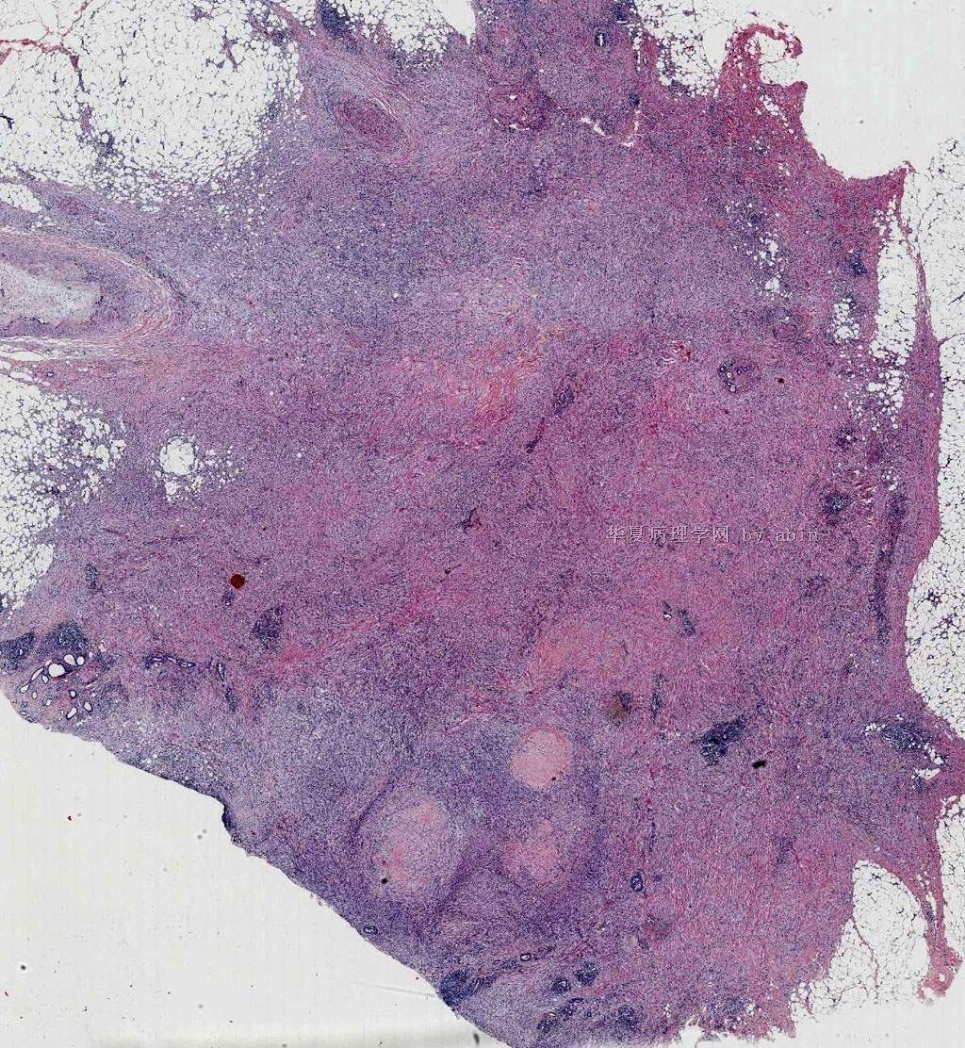| 图片: | |
|---|---|
| 名称: | |
| 描述: | |
- B1-9(天津医科大学附属肿瘤医院)_已点评
-
feng123456 离线
- 帖子:16
- 粉蓝豆:1
- 经验:163
- 注册时间:2011-07-02
- 加关注 | 发消息
-
guoyunquan 离线
- 帖子:181
- 粉蓝豆:76
- 经验:290
- 注册时间:2010-08-24
- 加关注 | 发消息
REVIEW
Recent developments in the histological diagnosis of
spindle cell carcinoma, fibromatosis and phyllodes tumour
of the breast
A H S Lee
Histopathology Department, Nottingham University Hospitals, City Hospital Campus, Nottingham, UK
This article reviews recent advances in the diagnosis of
these three unusual tumours of the breast. Spindle cell
carcinoma needs to be considered in the differential
diagnosis of many mammary spindle cell lesions: it is
important to be aware of the wide range of appear-
ances, including the recently described fibromatosis-
like variant. Immunohistochemistry using a broad
panel of cytokeratin antibodies is needed to exclude
spindle cell carcinoma; there is frequent expression of
basal cytokeratins and p63. CD34 is often expressed by
the stroma of phyllodes tumours, but does not appear
to be expressed by spindle cell carcinoma or fibroma-
tosis. Nuclear b-catenin is found in about 80% of
fibromatoses, but can also be seen in spindle cell
carcinomas and phyllodes tumours. Two recent studies
have described features useful in the distinction of
phyllodes tumour and fibroadenoma on core biopsy,
including increased cellularity, mitoses and overgrowth
of the stroma, adipose tissue in the stroma and
fragmentation of the biopsy specimen. Periductal stro-
mal tumour is a recently described biphasic tumour
composed of spindle cells around open tubules or ducts
(but no leaf-like architecture) with frequent CD34
expression. The overlap of morphology with phyllodes
tumour suggests that it may be best regarded as a
variant of phyllodes tumour.
-
zhaoyan2006 离线
- 帖子:139
- 粉蓝豆:42
- 经验:301
- 注册时间:2009-02-23
- 加关注 | 发消息



 ,很长见识。
,很长见识。




















